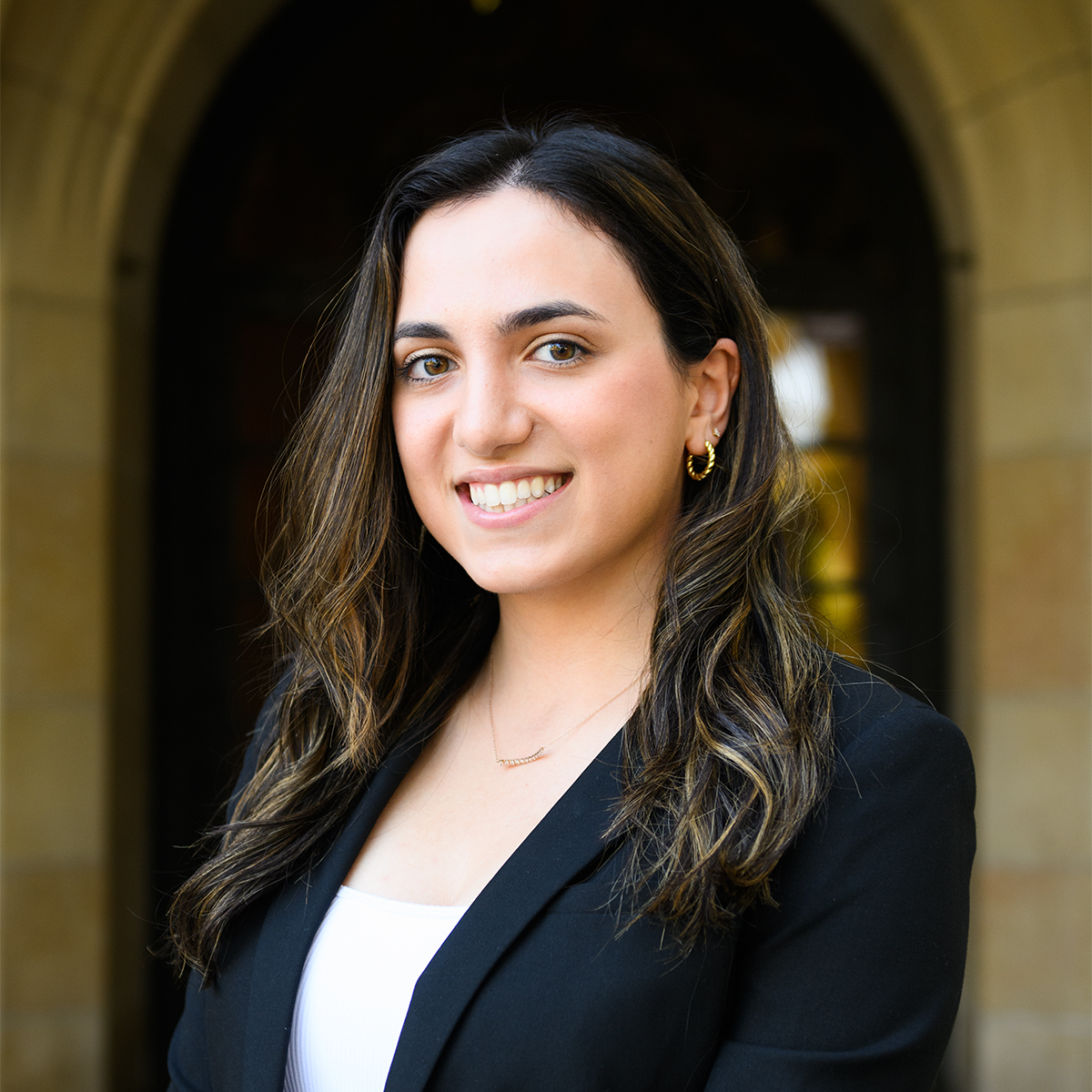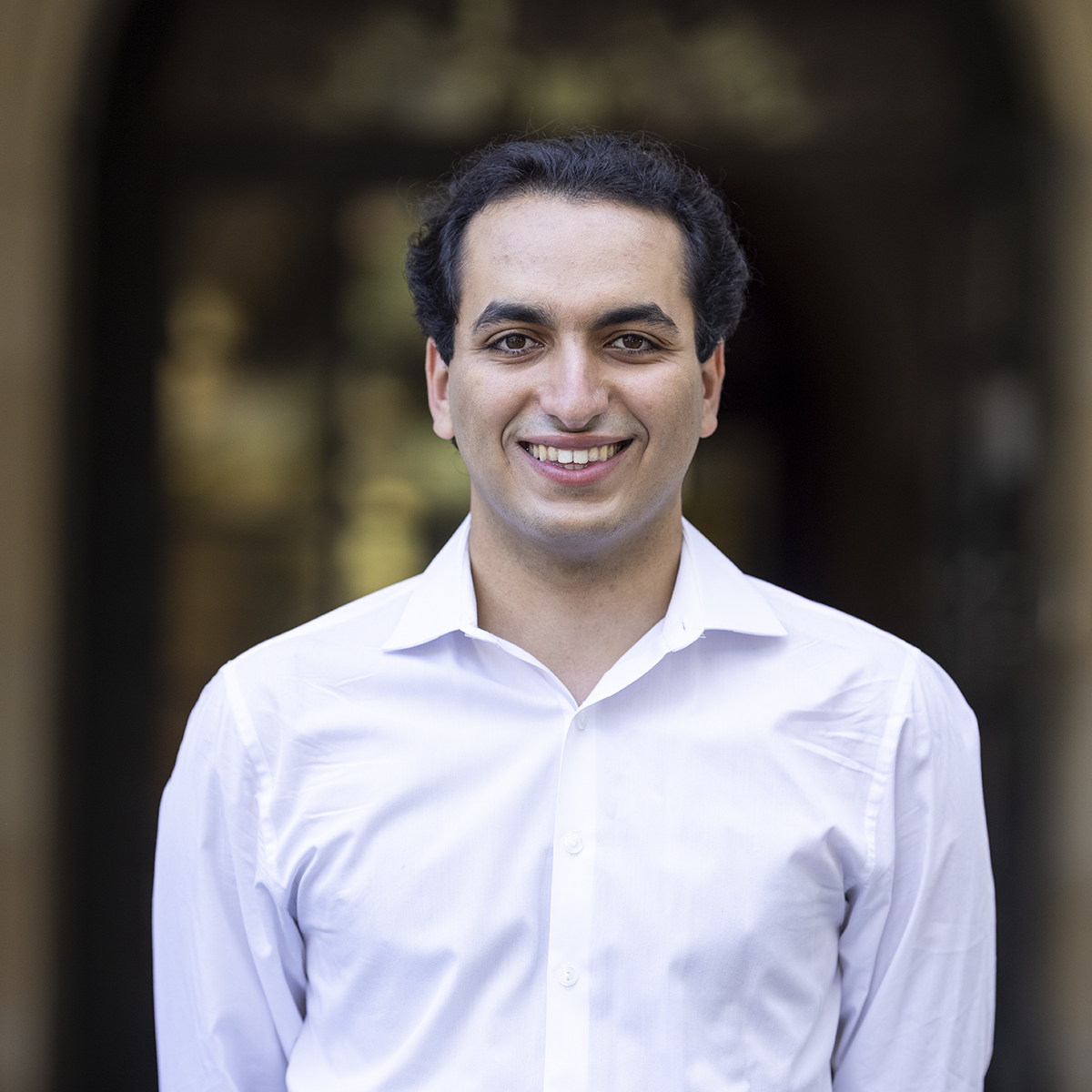New residence halls aim to facilitate success through work, study spaces
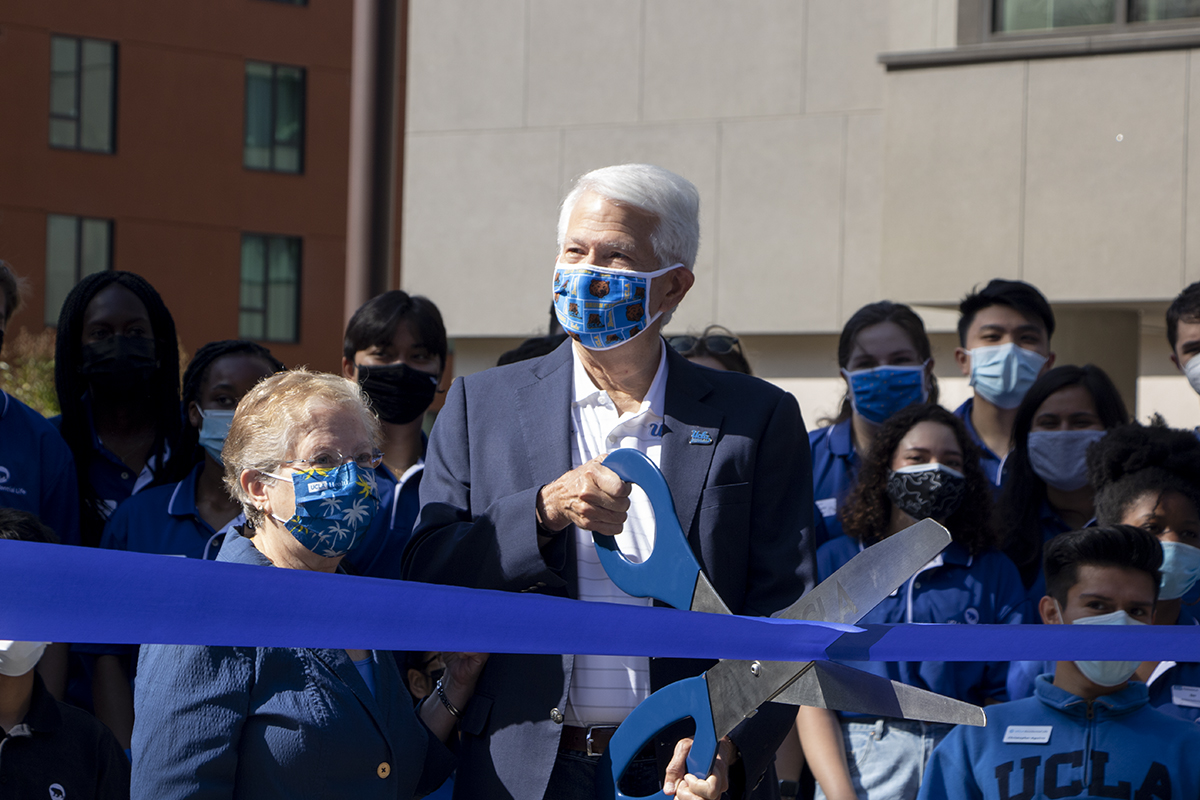
Olympic and Centennial residence halls opened to accommodate students for the first time this fall quarter. On Sept. 19, Chancellor Gene Block and housing staff hosted a ribbon-cutting ceremony to celebrate the grand opening of the new buildings. (Noah Danesh/Daily Bruin)
This post was updated Sept. 27 at 12:35 a.m.
Two new residence halls at UCLA opened this quarter and will accommodate 1,800 students.
The two buildings, Olympic Hall and Centennial Hall, contain a total of 621 triple occupancy rooms. These new rooms are larger than previous deluxe residence halls – the new rooms are 240 square feet, while the older residence hall rooms are each 170 square feet, said Peter Angelis, assistant vice chancellor of housing and hospitality services. Students have moved into the buildings, which are adjacent to Rieber Court and were built on the land of former Parking Lot 15.
On Sept. 19, Chancellor Gene Block, vice chancellors, housing staff and resident assistants commemorated the opening of the newly built residence halls at a ribbon-cutting ceremony.
Olympic Hall is named in honor of UCLA’s hosting of athletes for the Olympics. UCLA will serve as the Olympic and Paralympic Village for the 2028 Games in Los Angeles. Centennial Hall is named to celebrate UCLA’s 100th year, 2019, which is the year construction of the two buildings began.
Angelis said the new buildings serve as a testament to his department’s mission of providing more student housing opportunities and creating spaces where Bruins can achieve success.
The new buildings are part of an expansion project by UCLA to increase access to housing for students in the high-rent Westwood area. Earlier this year, UCLA opened a complex near campus that provides affordable housing to medical residents, fellows, interns and graduate students. UCLA is also planning to open another set of new apartments in Westwood in 2022, Angelis said.
Many students face financial difficulties trying to find off-campus housing near campus. Westwood is one of the most expensive areas for renters in the country, with the average rent being $2,500 for a one-bedroom apartment, according to Zumper, an apartment rental service.
The new developments are contributing to UCLA’s goal of guaranteeing students university housing for up to four years for freshmen or two years for transfer students.
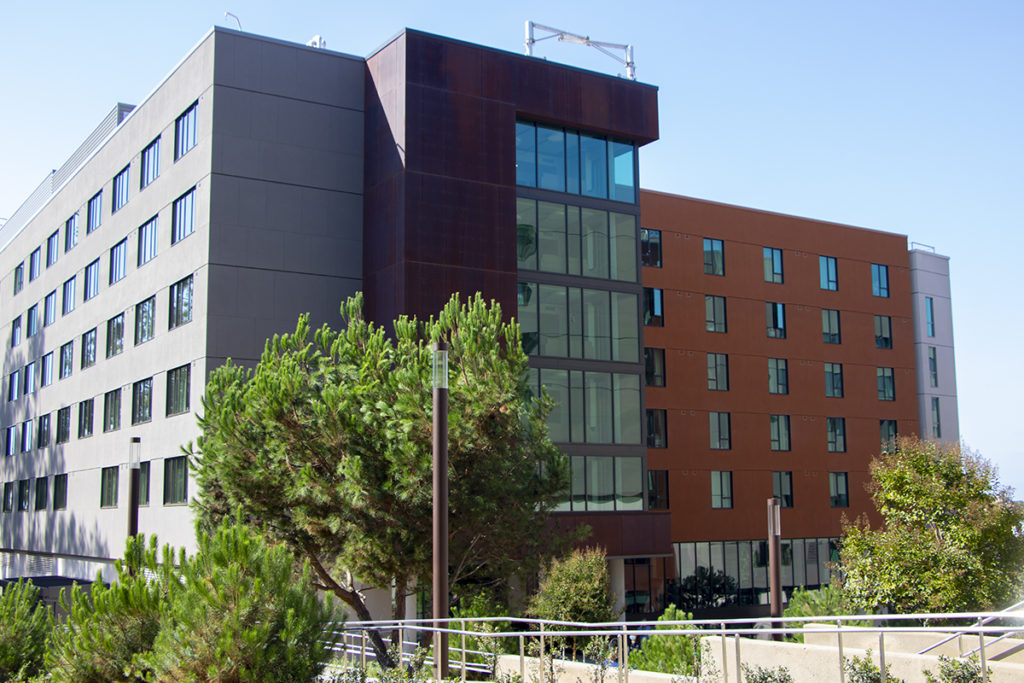
Angelis said Olympic and Centennial halls are more than just the typical residence halls. Devoted areas for group work and studying support the mission of assisting students in thriving academically, Angelis said.
Along with study and social spaces, the development includes a new makerspace – a dedicated, staffed area for innovation, which is more spacious and houses more advanced machinery than similar spaces on the Hill.
The facility provides access to 3D printers, laser cutters and sewing machines, as well as a staff dedicated to training and supporting students. It is unique for its breadth of tools and for its availability to all students living on the Hill, Angelis said.
“If we make great study spaces that are inviting, that are comfortable, that they enjoy being in, it helps them achieve what they want to achieve academically here at UCLA,” Angelis said.
“I am really excited,” said Brady Ankenbrandt, a second-year electrical engineering student and a makerspace staff member. “Not just about the new space and how many possibilities we have in such a larger room but also in the new machines we’ve been allowed to fit in that space.”
Alberto Mancia, a fifth-year mathematics student and one of the makerspace staff members, has worked in similar makerspaces on campus but said none have the same range of access or the trained support as the latest space. Mancia said that typically, access to a space and tools like those are restricted to certain majors or certain programs. However, the new makerspace and the staff support are open to everyone on the Hill.
“This is a big difference – not just from other spaces on campus but from most other colleges,” he said.
Angelis said there was extensive attention devoted to naming the new campus structures.
The facilities within the residence halls follow a botanical theme and nomenclature, Angelis said. The makerspace is named Emergent, like the branches that emerge at the very top of a tree. The name is fitting as it is a space for students to be creative and grow, he added.
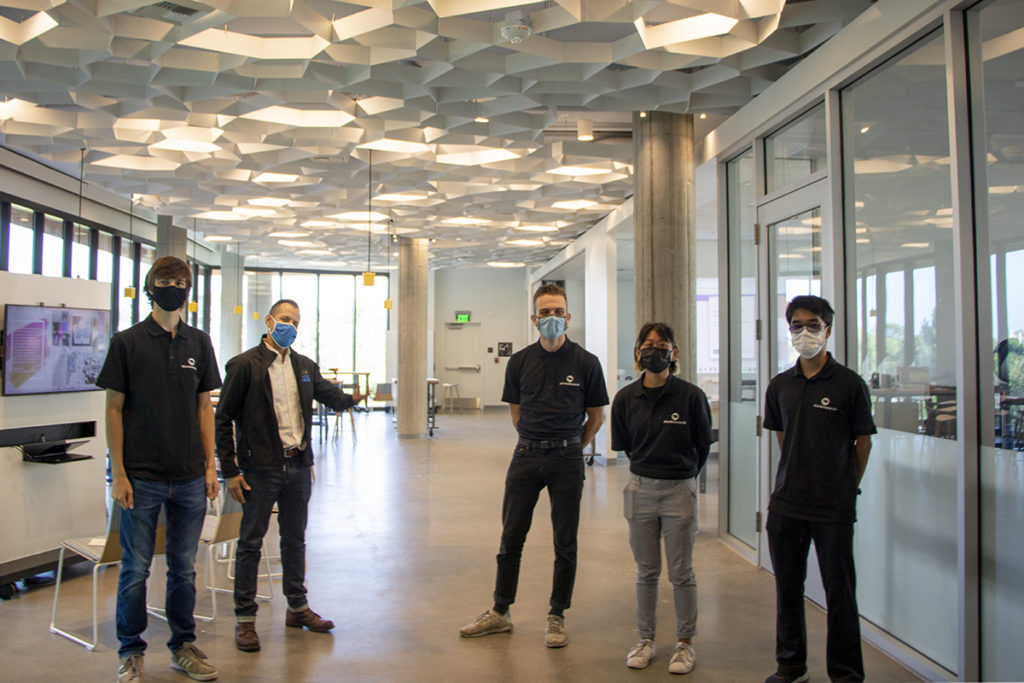
The innovation lab, known as the Branch, houses computers for students to create models and designs of their ideas before moving to the hands-on makerspace, Angelis said. The Branch provides another opportunity for collaboration, where students have the space and resources to plan projects they want to create, said Samantha Chan, director of conferences, catering and marketing at UCLA housing and hospitality services.
The complex also houses The Drey, a new to-go restaurant that will serve sandwiches, ramen and salads to students on the Hill while also serving as a study area, Angelis said. Its name – meaning squirrel’s nest – maintains the building’s theme.
In the process of designing these areas, Angelis said UCLA recognized students have various methods of studying and wanted to create spaces that would be conducive to all types of study.
The Understory, a lounge area in the new residence halls, provides a casual group setting in which students can gather on couches or booths and sit by a fireplace. To reflect the theme, the ceiling’s design mimics the intricate structure of a leaf when held to light. On the next floor – the Canopy – there are more individualized and focused study areas, he added.
Samantha Gallegos, a resident assistant in Olympic Hall, said she is excited for the benefits of having these common areas available for students on the Hill.
“There’s so many different spots for so many different characters,” said Gallegos, a second-year political science student. “If you’re super creative, you go to the makerspace. If you want to hang out with a small group of people, you could go to one of the smaller study lounges. If you want a huge movie night, you could go to one of the big lounges.”
About 14,500 Bruins moved into on-campus housing for the start of fall quarter. Angelis said he recognizes the responsibility his department holds.
“We’re supposed to take care of our students, making sure they’re comfortable, safe, well-fed,” he said. “We want to do this better than any university’s housing and dining program in the world. I think these buildings will attest to our aspiration.”



